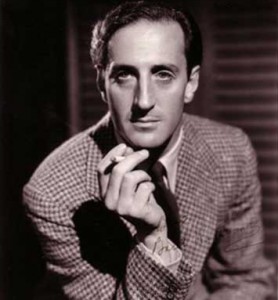
The Captive by Edouard Bourdet, translation by Arthur Hornblow. Philadelphia Artists’ Collective at the 2015 Philadelphia Fringe Festival
The Captive was written in 1926 when homosexuality was considered to be “the love that dare not speak its name.” Its Broadway run was halted by censors and the cast members were arrested. This revival proves that the play was a mature treatment of the subject, far ahead of its time.
The American ambassador to France is transferred to Italy, but his daughter refuses to move with him. He thunders that “the place for an unmarried woman is in the home of her father.” She defiantly says that she has ties that bind her to Paris but won’t reveal what they are. The father infers that it’s an attachment to a man. Daughter Irene (Rachel Brodeur) refuses to acknowledge that. Her reluctance makes him, and the audience, suspect that she is involved with a married gentleman.
The truth was even more shocking to this stern ambassador who says he “expects obedience” and to audiences in Paris and New York in 1926. As the action unfolds, we finally learn that she is in a relationship with a woman (whom the audience never sees). Irene wants her male friend since childhood, Jacques (played by Basil Rathbone in 1926 and Chase Byrd here), to lie to her father and say that he is the person to whom she’s attached. He loves her but is unwilling to support her choice. In Act II, however, circumstances lead the two of them to marry. This does not resolve things; conflict is just getting started.
The play powerfully portrays the feelings of the tortured and conflicted Irene and Jacques. They are starved for love but cannot be honest with, and present for, each other. They lay bare their desires but are incapable of answering the needs of the other. Director Dan Hodge says “It is an ugly reminder that you can never know the heart of the person seated next to you.” At first glance the captive of the title seems to be Irene, who is in thrall to her lover. She says “I’m afraid of myself” and eventually each character emerges as a prisoner to another.
I hesitated spoiling the revelation that does not come until a half-hour into the play, but the salacious choice of subject already is a well-known part of theater history. Rathbone wrote about it in his autobiography: “Our first night audience was completely ignorant of its theme. They were  stunned by its power and the persuasiveness of its argument; an important contemporary work of art.” His co-stars then were Helen Mencken and Ann Trevor. All of them were taken by police to night court. They were released when the producer agreed to close the play.
stunned by its power and the persuasiveness of its argument; an important contemporary work of art.” His co-stars then were Helen Mencken and Ann Trevor. All of them were taken by police to night court. They were released when the producer agreed to close the play.
The play’s language is dated but not pejorative. Lesbians are described as being “in the shadows, not for us; we must leave them alone” and one cuckolded husband warns Jacques “She can never belong to you; leave her.”
The distinguished critic Burns Mantle picked it as one of the best plays of 1926-27 and described it as a “restrained though uncompromising tragedy.” The Captive has not been performed in years, and its inclusion in Philadelphia’s 2015 Fringe was a welcome surprise.
A believable, relatable cast performs in close proximity to the audience in two rooms of the Physick House, built in 1786 by a wealthy wine importer in the classical Federal style. This setting appropriately embodies what the dialogue calls the “costly residences” of the ambassador and the international merchant Jacques. The rooms have brocaded wallpaper, large gold-framed paintings, a pianoforte made in London in 1770, and a marble fireplace with a mantel carved by the Wedgewood Company, topped with silver candlesticks.
This drawing room was frequented by Joseph Bonaparte, elder brother of Napoleon, who supplied the two French Glacier bowls that are on top of the sideboard. The players wore smart clothing of the 1920s including cloche women’s hats, re-created by Robin I. Shane.
Below, Helen Mencken & Basil Rathbone in the 1926 production: